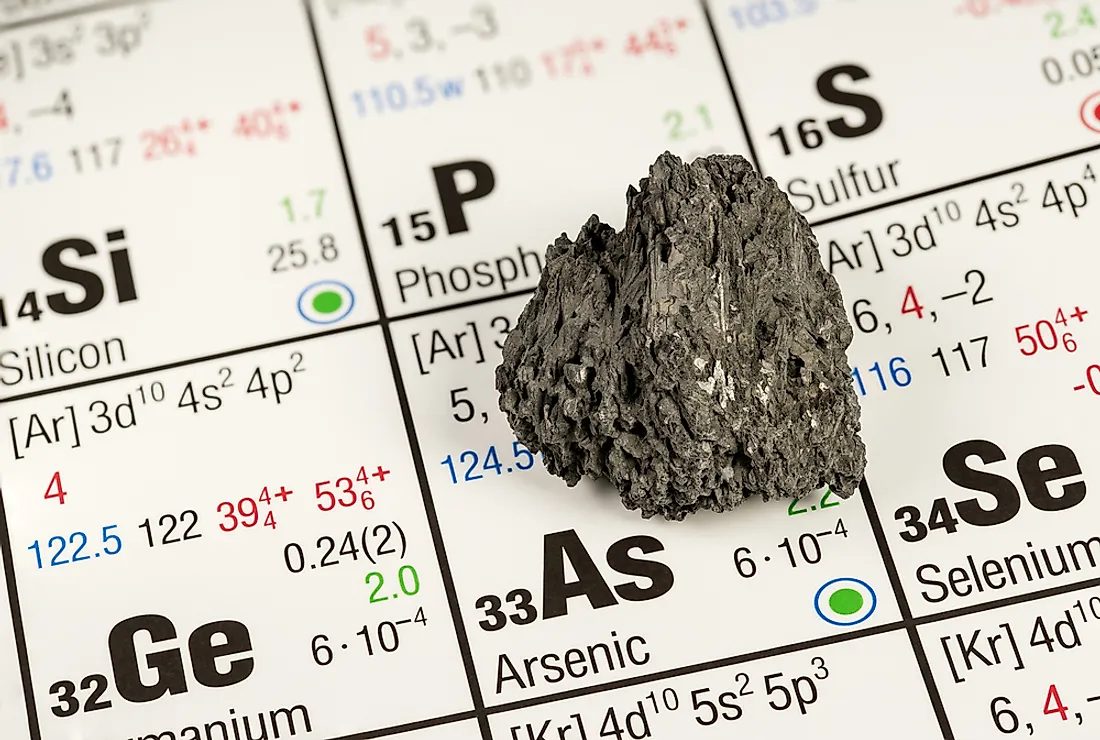What Are The Sources Of Exposure To Arsenic In The Environment?

Arsenic is a metalloid element that exists either as a metallic compound or as an elemental crystal. Scientists have established that some of the bacteria are able to utilize arsenic as respiratory metabolites. It is also thought that trace quantities of the element could be a necessary dietary element in animals and even humans. However, larger doses lead to arsenic poisoning. Arsenic has been recognized as a carcinogen, with long-term exposure to arsenic being linked to a wide variety of health complications including several types of cancer, heart disease, and diabetes. Despite its toxicity, arsenic still has some industrial applications around the world. The most common source of arsenic poisoning is the consumption of contaminated water.
Groundwater Contamination
The leading source of arsenic poisoning in humans is through drinking contaminated water. Some regions in the world have groundwater whose arsenic levels exceed the WHO set standards. Millions of people around the world inhabit these regions where groundwater is likely to contain arsenic, with some sources putting the figure as high as 200 million people.
In the US states of Wisconsin, Nevada, Michigan, and North and South Dakota, groundwater has been assessed and found to contain concentrations of arsenic. In some instances, arsenic in groundwater can affect surface water. An example is Arizona’s Verde River which is fed by groundwater and is known to contain arsenic.
America’s Environmental Protection Agency has adopted a standard of 0.01 milligrams per liter as the threshold of arsenic levels in drinking water. However, in other countries such as Bangladesh and India, the standard is dependent on numerous geographic, dietary and socioeconomic factors. The standard for arsenic in drinking water in areas without alternative sources of water in the two countries is 0.05 milligram per liter.
Pesticides and Wood Preservation
Arsenic compounds were used in the manufacture of pesticides such as lead hydrogen arsenate in the early 20th century. While the use of such pesticides has been banned in most countries around the world, the environmental persistence of arsenic means that many of the areas where arsenic-based pesticides were used still have arsenic residues.
Some livestock products contain arsenic in them such as roxarsone, a popular broiler starter whose use was banned in the United States in 2009.
However, the most widespread industrial application of arsenic in the United States is in wood preservation. Chromated copper arsenate has been used as a wood preservative around the globe for decades, and while its use has been banned in the European Union and the United States, it is still popular in many Asian countries.
Effects of Arsenic Poisoning
Due to its high toxicity, arsenic was traditionally used as a poison in the middle Ages, and, during Korea’s Joseon Dynasty, in capital punishment.
Studies conducted in Michigan and Wisconsin have shown an inverse relationship between the level of arsenic concentration in groundwater and the prevalence of several types of cancer, particularly bladder and kidney cancers. Arsenic exposure in pregnant women through ingesting contaminated groundwater has been linked to infant mortality, and can also result in infants with congenital disabilities.
Diagnosis of arsenic poisoning can be achieved by studying hair, blood, fingernails and urine samples.











